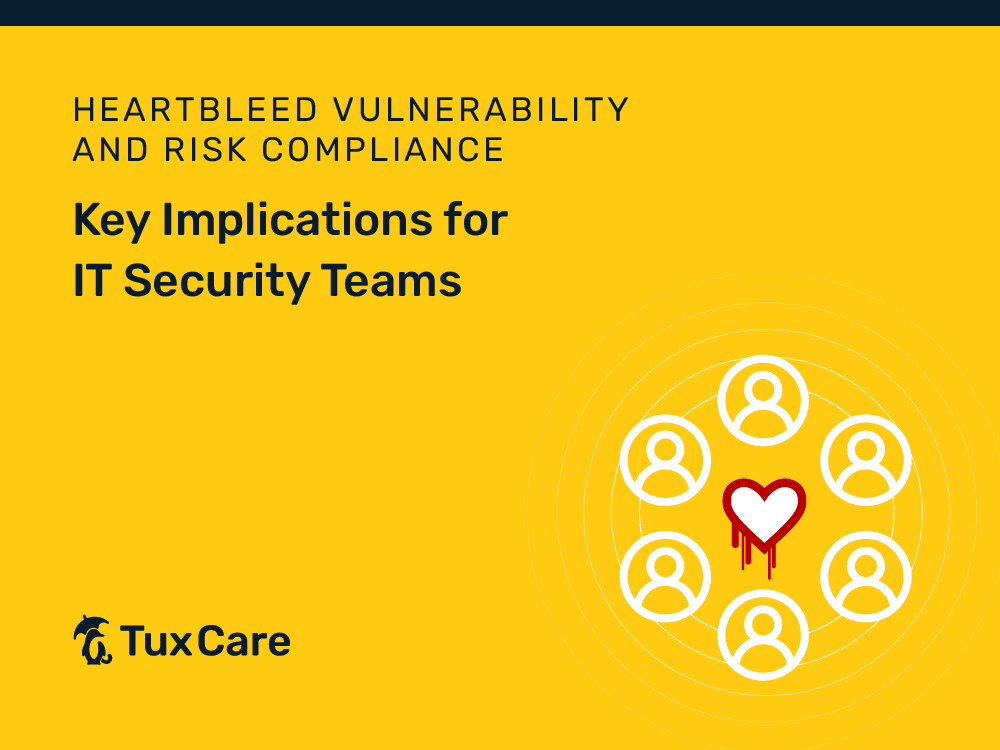Heartbleed Vulnerability and Risk Compliance: Key Implications for IT Security Teams
The Heartbleed vulnerability, which came to light in April 2014, had significant implications for IT risk compliance and exposed the vulnerabilities within many organizations’ security infrastructures. We have already discussed the Heartbleed bug in detail and how a small error in the code caused a critical vulnerability that could allow an attacker to steal private keys, usernames, passwords, and other sensitive information.
Although the vulnerability is fixed, it can still be exploited in older OpenSSL versions. So, it is highly important that organizations update their OpenSSL to the later versions to avoid the risk.
In this blog post, we will discuss some key implications for IT risk compliance that can help organizations better manage similar risks in the future.
Heartbleed Vulnerability: Exposing the Significance of Risk Compliance
The Heartbleed incident was a wake-up call for IT security teams around the world, highlighting several lessons that organizations should emphasize risk compliance for improving their cybersecurity practices.
Risk Assessment
The Heartbleed incident highlighted the need for comprehensive risk assessments. Companies should routinely test their systems and software for flaws like Heartbleed, which can jeopardize data security. Risk assessments are often required as a must-have strategy for cybersecurity in compliance regulations.
Data Security
Heartbleed disclosed a critical flaw in OpenSSL, which is widely used to safeguard sensitive information on the Internet, including login credentials and financial data. Heartbleed’s potential for a breach highlighted the significance of adhering to data protection laws like GDPR, HIPAA, or standards particular to a given industry.
Patch Management
The Heartbleed vulnerability served as an example of the value of timely patch management. Organizations need to have procedures in place to identify and deploy security patches quickly. Compliance frameworks often require organizations to show that they have successful patch management procedures to address known vulnerabilities.
Third-Party Risk Management
Many enterprises rely on third-party software components and services, like OpenSSL, which is widely used across the Internet. Heartbleed made it clear how crucial it is to know about and take care of vulnerabilities in third-party dependencies.
Incident Response
The Heartbleed vulnerability showed how vital a robust incident response plan is. Organizations are often required to implement incident response plans in order to reduce the impacts of security incidents like Heartbleed and guarantee rapid communication with affected parties.
Security Awareness and Training
Employees play a crucial role in preventing and mitigating security risks. Heartbleed highlighted the value of teaching staff about security best practices, identifying vulnerabilities, and successfully handling incidents. Organizations should invest in security awareness training to educate employees about the importance of cybersecurity, safe practices, and identifying security events.
Organizations can manage security threats and incidents effectively and promptly by following all these aspects of risk compliance.
Live Patching Against Vulnerabilities like Heartbleed
Live patching allows organizations to apply critical security patches without disrupting the operation of their systems. This continuous patching approach ensures that known vulnerabilities are promptly addressed, reducing the window of opportunity for attackers to exploit them. Compliance requirements often mandate timely patching as a fundamental security practice.
Conventional patching methods require system downtime, which can disrupt business operations. Live patching, on the other hand, enables organizations to apply patches without taking systems offline. This is crucial for organizations with strict uptime requirements, as it helps maintain service availability while staying compliant with uptime-related regulations.
With live patching tools like KernelCare Enterprise, organizations can mitigate security threats and avoid service disruptions due to patching.
By automating patch deployment, KernelCare enables organizations to respond swiftly to emerging security threats. When a critical vulnerability is discovered, organizations can apply patches in real time, reducing the exposure window and helping them meet the rapid response expectations of many compliance standards.
Final Thoughts
The Heartbleed vulnerability reminds us of the ever-present cybersecurity threats in our digital environments. It shows how important a holistic risk compliance strategy is for organizations to better handle similar risks in the future. This can be done through efforts including regular risk assessments, monitoring and auditing, an effective incident response plan, and a dedication to staying updated with security practices.
Additionally, implementing live patching helps organizations maintain a proactive and responsive approach to cybersecurity without having to reboot the server. Organizations can minimize security risks and meet regulatory requirements by applying the latest security updates and minimizing patching-related downtime. By learning from incidents like Heartbleed, organizations can better strengthen their IT risk compliance and enhance their overall cybersecurity posture.



 Documentation
Documentation Login
Login




